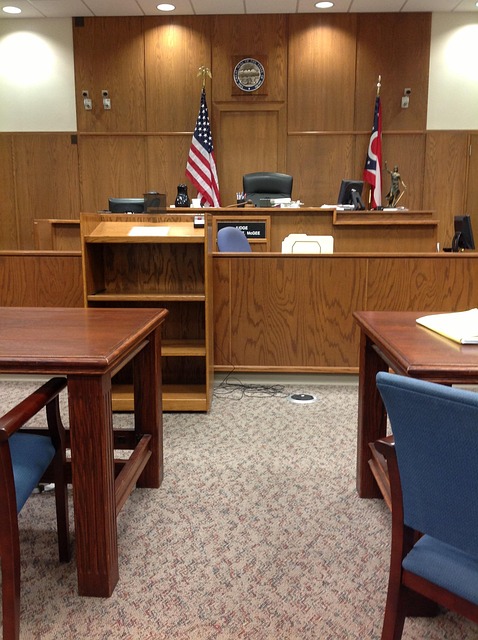Libel cases in civil court revolve around false statements causing reputational harm. Key factors determining outcomes include falsity, defamatory nature, and intent behind publication. Defendants employ defenses like challenging truth, disputing publication, or arguing against malice. Notable Libel Case Examples in Civil Court have established legal precedents balancing free speech with accountability, emphasizing context and fair comment. The process involves a libel filing, hearings, trials, evidence presentation, and eventual judgment or dismissal based on the evidence.
“Delve into the intriguing world of criminal law with a focus on libel, a powerful tool for accountability. This article explores the intricate dynamics of libel cases, their unique applications within civil courts, and how they shape our legal landscape. From understanding the fundamentals of libel law to analyzing common defenses, notable examples, and the step-by-step process of filing claims, we uncover the significance of these cases in holding individuals accountable. Discover real-world libel case examples in civil court that have left an indelible mark on legal history.”
- Understanding Libel Law and Its Civil Court Applications
- Common Defenses in Libel Cases: A Strategic Analysis
- Notable Libel Case Examples and Their Impact
- The Process: Filing and Resolving Libel Claims in Civil Courts
Understanding Libel Law and Its Civil Court Applications

Libel law, a cornerstone of civil litigation, involves making false statements that cause harm to an individual’s reputation. When a libel case makes its way to the civil court, it presents a unique challenge for both plaintiffs and defendants, as these cases often delve into nuanced issues of fact and opinion. The key distinction in a libel case compared to other civil matters is the focus on damaging one’s good name or reputation—an element that sets it apart from purely economic or property-related disputes.
Across the country, libel case examples in civil courts showcase the intricate nature of these legal battles. From winning challenging defense verdicts to navigating all stages of the investigative and enforcement process, these cases highlight the importance of understanding the complexities involved. The outcome often depends on whether the statement in question is deemed false, defamatory, and published with malice or negligence. This legal framework ensures that freedom of speech is protected while providing a mechanism for individuals to seek justice when their reputation has been wrongfully tarnished.
Common Defenses in Libel Cases: A Strategic Analysis

In libel cases, defendants often employ a range of common defenses to counter the allegations. A strategic analysis reveals that these defenses are multifaceted, aiming to challenge the truth of the statements, disprove publication, or argue against the existence of malice. For instance, in Libel Case Examples in Civil Court, a defendant might claim that the statements were true and, therefore, not libelous. This defense is particularly relevant in cases involving public figures or matters of public interest, where truth is a significant shield.
Another prevalent strategy involves disputing the method of publication. Defendants could argue that the alleged libelous material was not disseminated to a broad audience or that there was no direct communication to anyone, which can be crucial in distinguishing this case from other white collar and economic crimes. Moreover, general criminal defense mechanisms like lack of intent, misunderstanding, or even consent play a role. These defenses are leveraged at various stages of the investigative and enforcement process, offering legal avenues for individuals to protect their reputations and challenge libelous allegations effectively.
Notable Libel Case Examples and Their Impact

Notable Libel case examples have left an indelible mark on civil court proceedings, shaping legal precedents and protecting freedom of speech while maintaining accountability. Unprecedented track records in libel cases have often been defined by winning challenging defense verdicts, where individuals or entities successfully defended against accusations that could have otherwise tarnished their respective businesses’ reputations.
For instance, the case of New York Times Co. v. Sullivan (1964) is a landmark decision that set a high standard for libel plaintiffs, requiring them to prove actual malice—a reckless disregard for truth or falsity—in cases involving public figures. This ruling has been instrumental in ensuring a free flow of information and opinions while maintaining a balance against unwarranted defamation claims. Similarly, other notable cases have further refined the legal landscape, emphasizing the importance of context, fair comment, and the right to criticism as essential elements in libel defenses, ultimately strengthening the principles of a free and open society.
The Process: Filing and Resolving Libel Claims in Civil Courts

When it comes to addressing libel claims within the civil court system, the process involves a structured series of steps designed to ensure fairness and justice. The first stage is libel filing, where the plaintiff presents their case, outlining the false statements made by the defendant that have caused them harm. This can be particularly complex in cases involving corporate and individual clients, as legal teams must navigate the nuances of general criminal defense strategies while focusing on the civil implications.
The court then plays a crucial role in resolving the libel claim through hearings and trials. During this phase, both parties present evidence and arguments, with the judge or jury determining whether the defendant’s statements were indeed defamatory and caused demonstrable damage to the plaintiff. Ultimately, the outcome may result in damages being awarded to the plaintiff for their reputational harm, or the dismissal of the claim if the court finds avoiding indictment is warranted based on the evidence presented.
Libel law, with its intricate details and potential for significant impact, plays a vital role in civil courts. By examining common defenses and notable libel case examples, we gain insights into the strategic nuances of these cases. Understanding the process of filing and resolving libel claims is essential for both plaintiffs and defendants navigating this complex landscape. These aspects collectively contribute to the broader discourse on libel law’s role in ensuring responsible communication and accountability in civil courts, as evidenced by various libel case examples in civil court throughout history.






